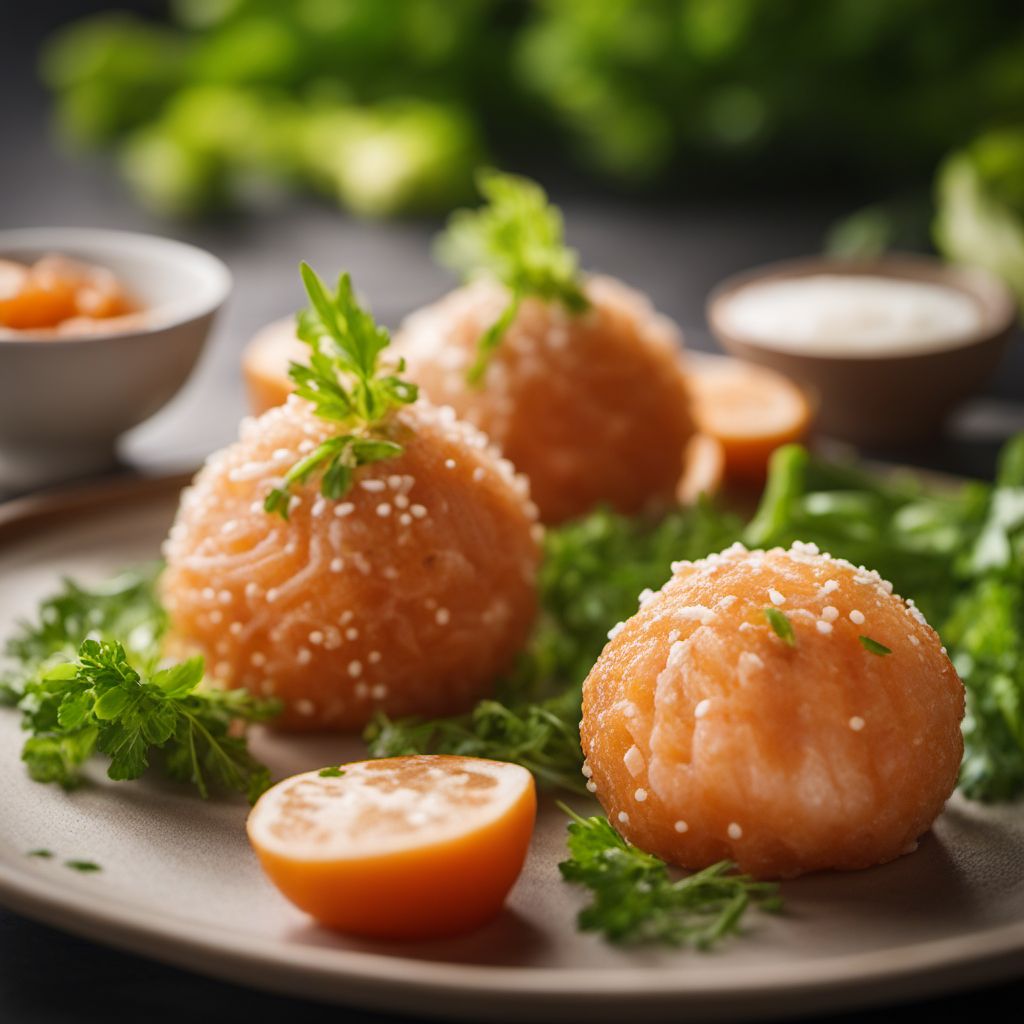
Ingredient
Fish balls
The Savory Delicacy from the Sea
Fish balls are made by grinding fish meat into a fine paste, which is then mixed with seasonings such as salt, pepper, garlic, and herbs. The mixture is shaped into small balls and cooked by boiling, steaming, or frying. The resulting fish balls have a bouncy and springy texture, with a savory taste that is enhanced by the seasonings.
Origins and history
Fish balls have a long history in Asian cuisines, particularly in countries like China, Thailand, and Malaysia. They are often associated with street food culture and are commonly found in bustling markets and food stalls. Fish balls have become a beloved snack or ingredient in various dishes, showcasing the culinary diversity and creativity of Asian cuisine.
Nutritional information
Fish balls are a good source of protein, vitamins, and minerals. They are low in fat and calories, making them a healthier alternative to other fried or processed snacks. However, the nutritional content may vary depending on the specific recipe and cooking method.
Allergens
Fish balls may contain allergens such as fish and gluten. Individuals with fish allergies or gluten intolerance should exercise caution and avoid consuming fish balls or opt for allergen-free alternatives.
How to select
When selecting fish balls, look for products that are fresh and have a firm texture. Avoid fish balls that appear mushy, slimy, or have an off-putting odor, as these are signs of poor quality or spoilage. If purchasing from a street vendor, ensure that the fish balls are cooked thoroughly and served hot to minimize the risk of foodborne illnesses.
Storage recommendations
To maintain the freshness and quality of fish balls, store them in the refrigerator at a temperature between 32°F and 38°F (0°C and 3°C). Keep them in an airtight container or wrapped tightly in plastic wrap to prevent drying. Consume within a few days of purchase or preparation for optimal taste and texture.
How to produce
Producing fish balls at home requires grinding fish meat into a fine paste using a food processor or mortar and pestle. The paste is then mixed with seasonings and binders, such as cornstarch or tapioca starch. The mixture is shaped into small balls and cooked by boiling or steaming. Homemade fish balls can be customized with different types of fish, herbs, or spices to suit personal preferences.
Preparation tips
Fish balls can be prepared in various ways, depending on personal preferences and regional cuisines. They can be boiled in a flavorful broth and served as a soup, skewered and grilled for a smoky flavor, or deep-fried for a crispy exterior. Fish balls are commonly used in noodle soups, hot pots, stir-fries, or served on their own as a snack with dipping sauces.
Culinary uses
Fish balls are widely used in Asian cuisines, particularly in dishes such as fish ball noodle soup, curry fish balls, or fish ball skewers. They are also a popular street food item, often served on skewers with a variety of sauces and condiments. The versatility of fish balls allows them to be incorporated into a wide range of dishes, adding a unique texture and flavor.
Availability
Fish balls are commonly available in Asian markets, grocery stores, and supermarkets, especially in regions with a significant Asian population. They can also be found in frozen or dried form, allowing for longer shelf life and convenience.
More ingredients from this category

Fish and vegetables meal
Oceanic Delight: A Nutrient-Rich Fusion of Fish and Fresh Vegetables

Prepared fish salad
Oceanic Delight

Bouillabaisse
The Quintessential Seafood Stew

Seafood salad
Ocean Delight

Fish and potatoes meal
A Seafood Delight: Fish and Potatoes

Fishcakes
Savory Sea Delights

Fish and rice meal
A Nutritious Fusion

Fish gratin
Creamy Seafood Delight: A Delectable Fish Gratin Recipe

Fish pâté
The Delicate Delight of Fish Pâté

Seafood-based meals
The Bounty of the Ocean: Seafood-based Meals